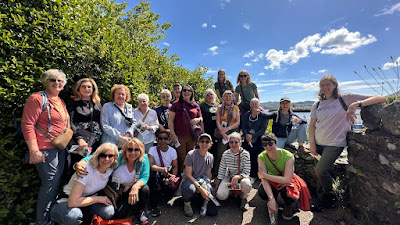Heading into the holidays and end of the year, I’ve been reflecting on twelve months of change. In 2025, I continued to shift my career and completed a full year of teaching yoga. Amid all the hustle, bustle, and transformation, YCW remained a constant. Like a second home, it offers coziness and grounding, always meeting me exactly where I am.
So, here’s to YCW and twelve of the many reasons I keep returning.
12 months of joy
The warmth and brightness of the studio greet me the second I walk in. YCW has been both a reprieve and a force of buoyancy in my days. Whether it’s been three days or three months since I last stepped through the door, I always feel welcome back.
11 yoga teachers
The quality of instruction is unmatched. The eleven teachers on the regular schedule, plus those teaching in community classes or stepping in when needed, bring so much wisdom and heart to every class. It’s the teachers, front desk staff, and community that make YCW truly special to me.
10 savasana minutes
In my early yoga days, I was that person who occasionally slipped out early (the horror!) and skipped savasana. Now, it’s often the best part of my practice. Soaking in the teachings, feeling the room’s quiet energy, and fully releasing into the mat are some of the most precious moments of class.
9 days in Ireland
8 days of sadhana
The sadhana that unfolded during the early days of the pandemic was a lifeline for me. Even though we were far apart at the time, YCW created a beautiful container for practice and community in an online space. Through the sadhanas I’ve attended since then, I’m always supported in honouring the seasons, my body, my breath, and my connection to others. I cannot wait for the Winter Solstice Sadhana starting on December 14!
7 styles of yoga
One of my favourite things about YCW is its commitment to alignment-based instruction that meets every body where it is. It also blends unique styles that I don’t see anywhere else. With classes like Kripalu (a style I love) and Kaiut, alongside Vinyasa, Flow, and Relax and Restore, I know that I can always find exactly what my body and mind is asking for.
6 props a-ready
I wrote about my love of props in last month’s post and every time I think I’ve learned all the ways to use them, a creative YCW teacher surprises me with something new. I’ll never forget the surrender I felt the first time a sandbag was placed on my back in child’s pose. It was bliss.
5 orchid blooms
As a (recovering!) black thumb, the plants and flowers in the studio’s sunny entrance always make me smile. I especially love the orchids and watching them bloom with their stunning colours.
4 yoga nidras
I had never experienced yoga nidra before attending one of Patty’s workshops. Now, I try to join as many as I can. Through her soothing voice and grounding invitations, Patty guides us into deep rest and healing. It’s worth every minute.
3 yoga snacks
Yoga doesn’t have to be a 60-minute practice, it can be bite-sized and worked into small moments. It feels perfectly YCW to share yoga with the community in an accessible way with a side of quirk – who doesn’t love a “snack?!”
2 studio spaces
Whenever an old friend comes home to visit, we try to take a class together at YCW. The reason is always the same: the space is small, rooted, welcoming, and cozy in a way that other studios aren’t.
And a little sloth named Geoff
I’m looking forward to beginning 2026 with YCW and seeing how many more reasons I can add to this ever-growing list of why it's my favourite place to learn, move, and breathe.
Why do you love YCW? Share in the comments!
Happy holidays!







.jpg)
.jpeg)


